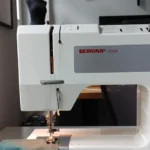
Which is the best sewing machine for beginners?
11/29/2024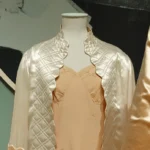
How To Spot High-Quality Women’s Clothing
11/30/2024Since a year I keep stumbling across videos on TikTok about nothing fitting anymore, cuts being awful or clothing being extremely poor quality. As a seamstress I can tell you; there is no standardized sizing system in the entire world and even then, it is quite hard to create one cut that fits all. So, what can we do about it?
Find out what's your body type
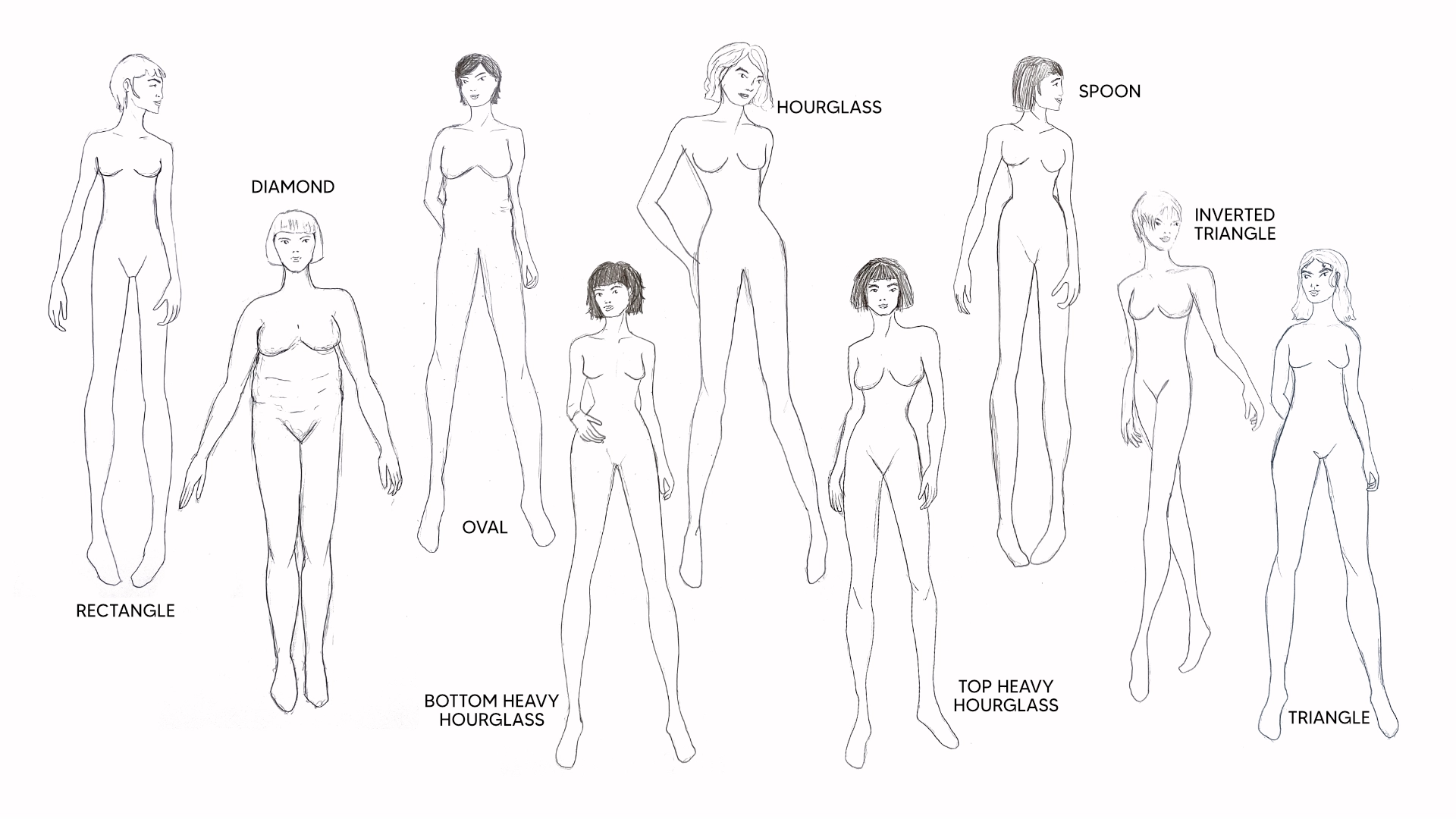
Knowing your body type is the first step into solving the problem because you’ll learn what your body needs.
I am sure you have heard about the horizontal body types:
- inverted triangle
- hourglass (bottom heavy/top heavy/balanced)
- oval
- triangle
- spoon
- rectangle
- diamond
In one of my other articles, you can find out how to determine your body types if you don’t know it. In my opinion there is no wrong body type. This system only helps us to create better sewing patterns and develop an eye for specific clothing cuts when shopping.
What’s your vertical body type?
In addition to your horizontal body type you also need to know your vertical body type. There are 3 types of vertical body types, based on the distribution of your upper torso compared to your legs.
You can have the combinations:
- Short torso & long legs (1/3 to 2/3)
- Long torso & short legs (2/3 to 1/3)
- Balanced torso & legs (1/2 to ½)
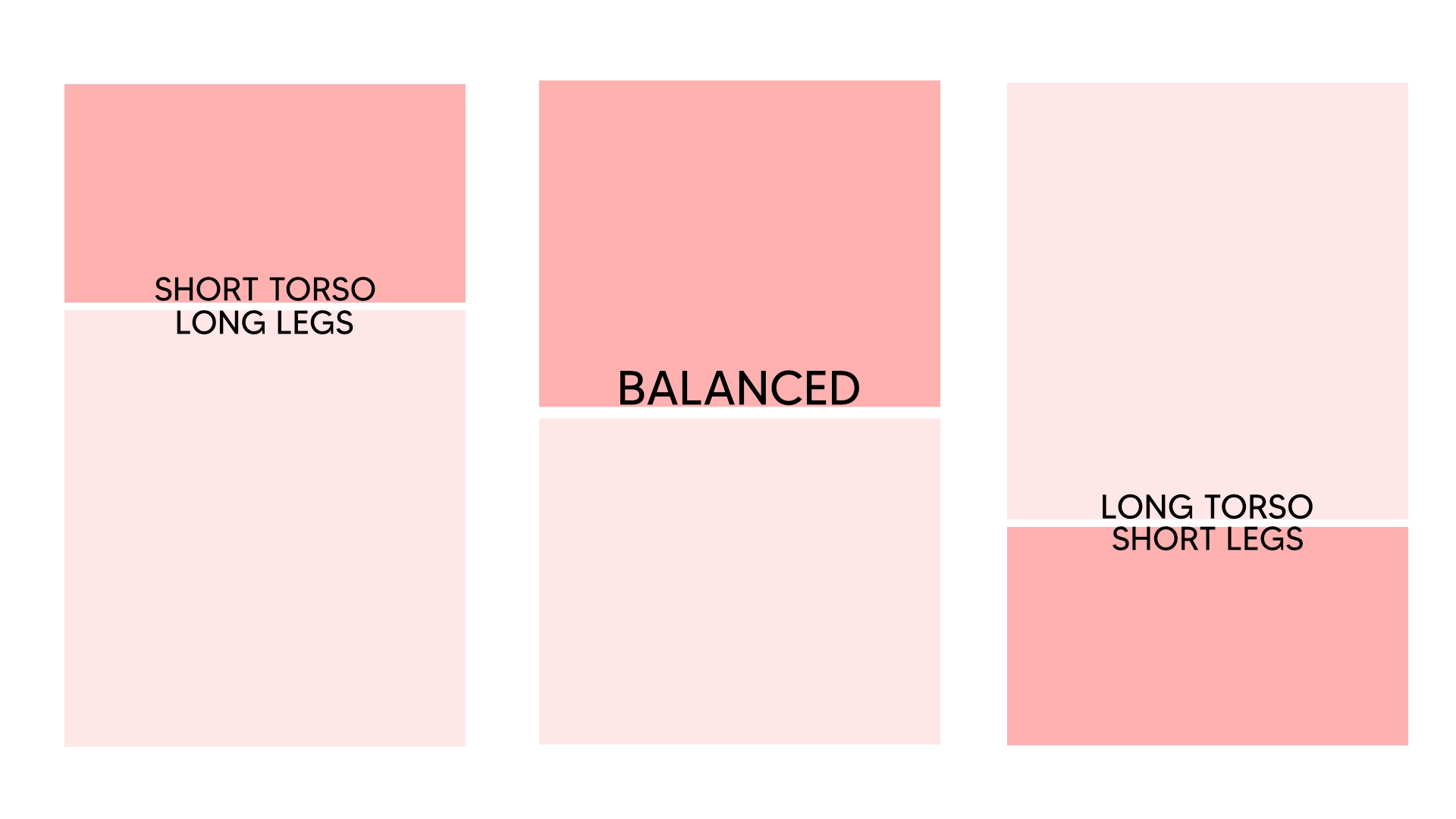
Vertical body types
How does the profile of your body look?
There are several factors about your side profile. First look at your chest, how is it distributed? Does it look flat even if you have a wide circumference. Do you have a prominent cleavage? Do you have a round back and is your neck leaning forward?
The next body part to look at is your bottom. Is it flat? Do you have wide hips? Is it very prominent or does it look balanced? Do you have a bit of a hollow lower back?
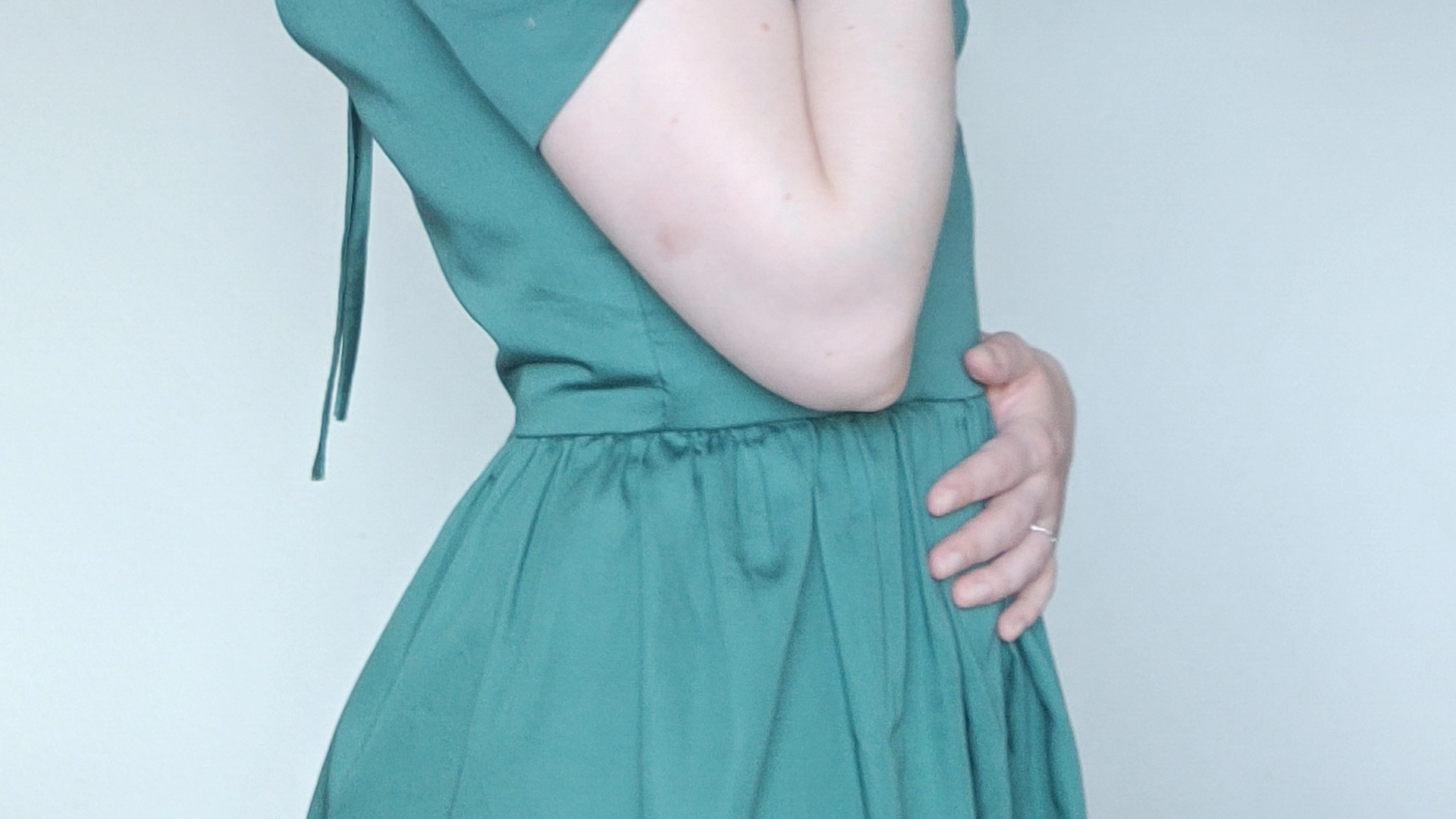
My hollow back
How to find clothes that fit: What you need to look for
I won’t tell you that you can’t wear a certain style of clothing because you can wear whatever you want and even if you don’t find it in stores, you can easily sew a lot of clothes yourself. It takes a bit of time, but you’ll always be able to find, or make something that is your size and style.
If you want to shop in the store, here are some factors you can look for:
Recommendations for long torso and short legs
If you have a long torso, high rise/midrise will work well for you and lengthen your legs. To determine your rise, get a measuring tape and measure from your waist to crotch. Then next time you go shopping, you take your measurement tape with and measure the distance from the middle crotch seam to the waistband. That’s how you can determine if they fit you.
If you don’t know your leg length it is also worth measuring that. It is normally measured from your crotch along your leg to the floor.
What's your trousers length?
|
Size-length |
Measurements |
|
26 |
62-66 cm |
|
28 |
67-71 cm |
|
30 |
72-76 cm |
|
32 |
77-81 cm |
|
34 |
82-86 cm |
|
36 |
87-91 cm |
|
38 |
92-96 cm |
What to do with short torso and long legs
Many models have a short torso that take up 1/3 of the body and super long legs that are 2/3. With this type, low-rise and mid-rise are your friends, especially if you don’t want to have trousers digging into your ribcage. Plus, you can wear mid-rise and give the optical illusion that your wearing high rise. Also in this case, measure your rise with a tape measure and when shopping; check it’s the same on the item before buying it.
Short torsos and tops
If you don’t like tops that are too long; try to go for cropped tops. In most cases they’re the perfect length and if not, it’s quite easy to shorten tops yourself or get them shortened by a seamstress.
What your horizontal body type can tell you about trousers
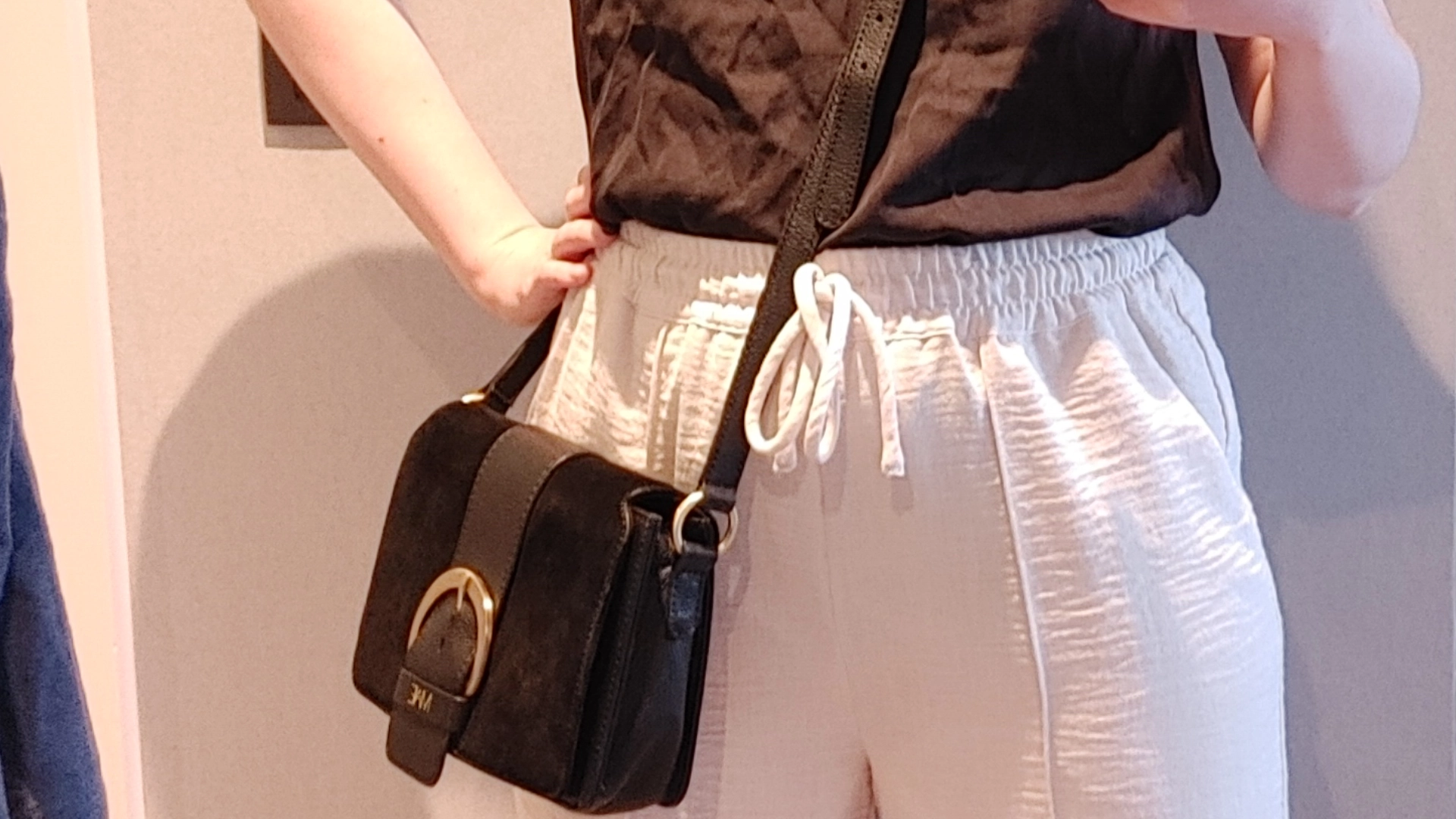
lRectangular body types find trousers a bit easier because nowadays, the cut for jeans is straighter. For all women with curves, it’s tricky because trousers often fit us either on the hipline and are too loose on the waist, or we can’t even get them over our hips.
How to find trousers for curvy bodytypes
One solution is to look for trousers with an elasticated waist. This will make them sit nicely on our waist and our hips. Another option would be to check the cut for a curve from the hips to the waist, along with some darts. If the trousers have no prominent curve, folds and darts are the next thing to look out for because they reduce the hip-width to a smaller waist-circumference.
Shape of your bottom & trousers
Ever had the feeling that 100% cotton jeans were digging into parts of your body? That might be because you don’t have enough fabric in the back of the jeans. One solution that the industry uses frequently blending in elastane into the fabric, so that it moves a bit with your body, but that doesn’t solve the problem every time…
Flat & prominent bottom: Why the angle in the back of trousers matters
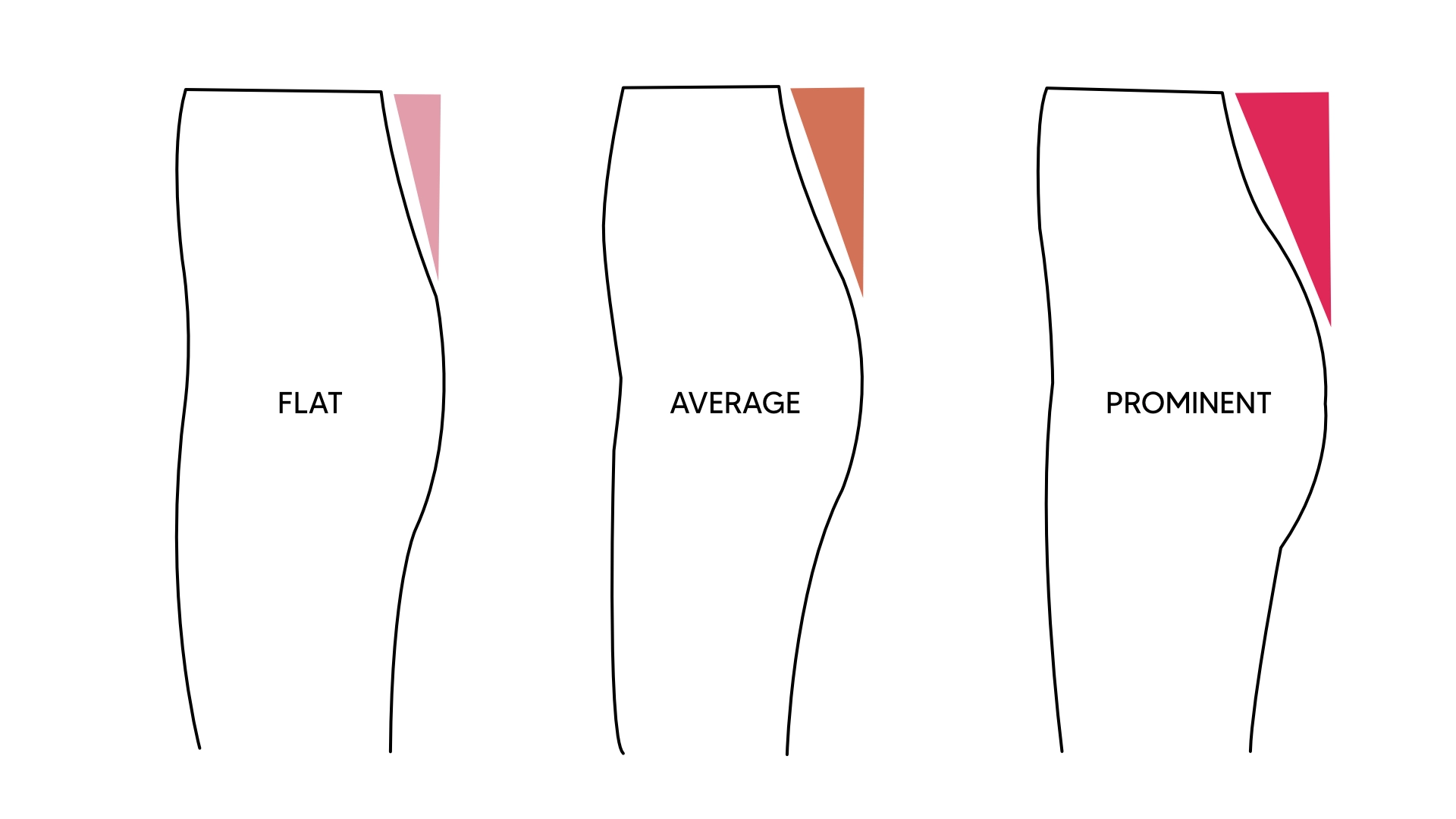
When you have a flat bottom - the angle between the end of your bottom and your waistline is quite small. It might sound strange, but you should try to find a pair in the men’s section because these are a bit more straight in the bottom area.
If you have a prominent bottom, then you need a bigger angle between the end of your bottom and your waistline and the rise is longer. To be honest, these trousers are hard to find right now and I couldn’t find a brand so far that fulfills that need. If you don’t want to sew your own pair of trousers or go to a tailor but you desperately want some (like me), your best bet are elasticated fabrics or baggier/business trousers.
Finding (non-elasticated) tops can be challenging
Currently boxy cuts and jersey fabrics are trending because you can serve a wider audience with them. As you can see from the prior part about trousers there are so many factors that play into sizes, and it is quite hard to tailor clothing for so many body types.
Women’s fashion must cater more chest variations than men’s
Over the last couple of years we can see a decline in shaped tops. Darts and several pieces in a top’s construction have gone missing, but why? First, it’s cheaper to produce and you have a lot less risk of dead stock. Our breasts have different shapes, distances in between, distributions and sizes. The perfect garment needs to support them, with the darts in the perfect spot yet giving enough room.
One of the hardest things to tailor is the chest, because most of the time you will need to adapt the armhole and some other parts to make it fit. In my opinion if you want something non-elastic that fits you like a second skin, you should invest some time to sew a blouse/top yourself or go to a tailor. These pieces are investments and with a good quality fabric they last you for years, if not decades.
What you can look for when shopping for tops:
- Darts shall never end on your bust-point, always a bit before.
- A button should be on your widest part of the chest or 1-2 cm higher.
- Enough breathing room.
- Strange creases and folds.
- Fit around the neckline.
My conclusion to why clothes don’t fit anymore
Maximising profit and growth are some aspects that the industry is focused on. Fast fashion maximising profit by optimizing the cut, materials and production costs is a natural evolution of this trend. Plus, by producing things that don’t fit, we tend to buy more because we don’t have anything that does properly fit, so we end up hunting for the right piece of clothing, to buy a piece that doesn’t fully fit… and the cycle continues.
In the end, it is our choice if we want to contribute to this system or choose to invest our time and money into sewing our own clothes. We can save on two of the major pitfalls of the clothing industry by sewing our own clothes, the shoddy fit and the horrific effect fashion production has on the climate. To me sewing is a form of self-expression and I am convinced that we can change the world by sewing our own clothes.


